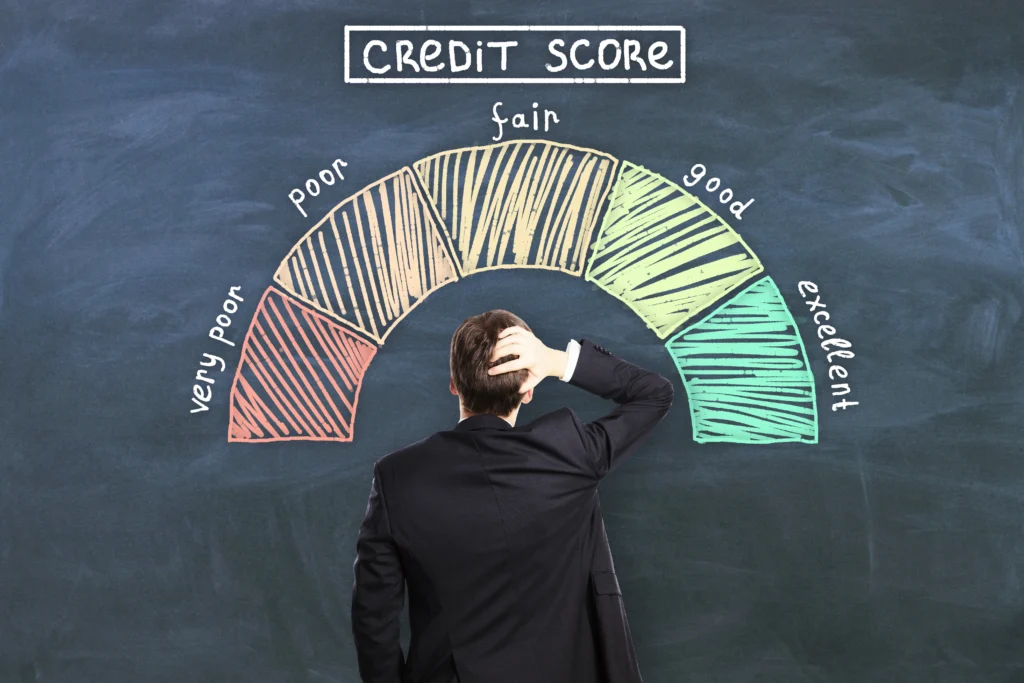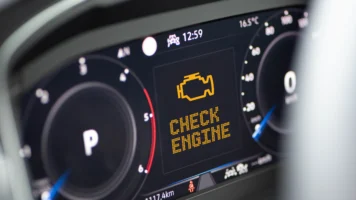Bad Credit Loans in Australia: A Simple Guide
Most Australians don’t think much about their credit score until they’re denied a loan. Whether your credit score isn’t where you’d like it to be, you want to boost your rating, or you just want to learn more about bad credit lending, you’re in the right place. We’ve put together this overview to teach you everything you need to know about bad credit loans in Australia.
This guide provides general information only and may not be appropriate for your specific situation. For personalised advice, consult a qualified financial professional.
Overview:
- What are bad credit loans?
- History of bad credit lending in Australia
- Definitions
- How to check if you have bad credit
- What can I use a bad credit loan for?
- Loan amounts
- Interest rates
- Bad credit loan requirements
- Application process
- Who is Swoosh Finance?
What are bad credit loans?
A bad credit loan is a type of personal loan offered to people with a less than ideal credit score. Bad credit lenders tend to take an alternative approach to loan applications, looking beyond your credit score to look at the wider picture. This is because credit scores can take a long time to repair, and your situation may improve much faster than your score.
Most lenders who offer bad credit loans look at your financial circumstances as they exist now. Each lender will have their own eligibility criteria, which can include income, employment status, and recent financial behaviour. Meeting these requirements does not guarantee approval, but it can improve your chances depending on the lender’s assessment process.
Secured vs unsecured bad credit loans
A bad credit loan can be either secured or unsecured. Generally, if you have an asset like a car or property to secure against your loan, lenders will provide better terms, lower interest rates, or the ability to borrow more. Unsecured bad credit loans can be more difficult to get approved, but some lenders in Australia do offer them.
History of bad credit lending in Australia
Consumer credit has come a long way in Australia. It used to be much harder for someone with bad credit to get a loan application approved. That’s because Australia didn’t introduce Compulsory Credit Reporting until 2014. Before then, only negative factors like missed repayments and hard credit inquiries were factored into your credit score.
With Compulsory Credit Reporting, or CCR for short, your positive credit habits are also taken into account and shown on credit reports. Positive credit reporting looks at everything from the dates you applied for, opened and closed credit accounts, to the payment history of all credit accounts. That doesn’t just mean credit cards and loans, it’s phone and utility bills too.
Now lenders can see the bigger picture, but bad credit is still a factor. Banks are typically still very conservative when it comes to high risk loans, meaning it can still be tricky for borrowers with a bad credit history to get approved for a loan.
But a bad credit score doesn’t necessarily make you a bad borrower. Life is unexpected, and bills can crop up all the time, from emergency vet bills to an expensive crash on the drive home from work. That’s why other financial institutions, like Swoosh, offer bad credit loans–-taking into account all your circumstances to find a solution that works for you.
Definitions
What is bad credit history?
Bad credit history refers to a credit report that shows past issues with managing credit—such as missed repayments, defaults, or high levels of debt. This information is recorded by one or more of the three main credit reporting agencies in Australia: Equifax, Illion, and Experian. These agencies collect data from lenders, utility providers, and other sources to create credit reports and assign credit scores.
Credit bureaus generally don’t use the term ‘bad credit’, instead opting for a scale where below average is the lowest range. Your credit history is rated between 0-1200 for Equifax, 1-1000 for Illion, and 0-1000 for Experian. This rating reflects your past credit behaviour, which lenders can use as part of their assessment process. Each credit bureau has a different method for calculating a credit score and different definitions for what is considered a ‘poor’ or ‘bad’ credit rating.
| Credit bureau | Excellent | Very Good | Good | Fair | Below average |
| Equifax | 853 – 1,200 | 735 – 852 | 661 – 734 | 460 – 660 | 0 – 459 |
| Experian | 800 – 1,000 | 700 – 799 | 625 – 699 | 550 – 624 | 0 – 549 |
| Illion | 800 – 1,000 | 700 – 799 | 500 – 699 | 300 – 499 | 1 – 299 |
Bad credit history vs no credit history
Having a bad credit history isn’t the same as having no credit history. Bad credit history happens because you’ve missed payments, or failed to meet credit requirements in the past. Having no credit history might sound like a good thing, because it means you’ve never needed a loan to cover your expenses, but it can still make financial institutions wary of lending to you.
You can build credit history in a number of ways, the most obvious being taking out loans or applying for credit cards. But you can also build a credit history simply by being listed on household bills like power or water, or by paying off a phone plan. You’ll still have to work your way up to larger borrowing amounts and better rates over time, but you won’t have to worry about past credit mistakes dragging your rating down.
Don’t have time to build up enough credit history? We’ve got you covered with a no credit history loan from Swoosh.
What is a credit bureau?
We already mentioned the three main credit bureaus in Australia above, but what exactly are they? A credit reporting body (CRB), often called a credit bureau or credit reporting agency, is an organisation that collects credit information. In Australia, these credit bureaus are governed by the Privacy Act, which sets out exactly what information can be collected, what’s included in your credit report, and who can access your credit report.
While credit bureaus don’t lend money themselves, they are used by almost every bank and lender in Australia. That’s because lenders use the information collected by credit bureaus to assess whether or not someone is eligible for a loan, and how much they might be approved for.
How to check if you have bad credit
You are able to access your credit report for free every 3 months in Australia, and you can also pay a small fee to access your credit report more often. Checking your own credit report will not have any negative impact on your credit score.
It’s good to check each credit bureau regularly. Each one can have different information about you depending on which bank or lender you use. Knowing your credit score will help you understand what type of credit or finance you are likely to be eligible for. This can help you decide what to apply for and where to apply.
What can I use a bad credit loan for?
As bad credit loans are a type of personal loan, you have a lot more freedom with how the money is spent compared to other loan types. You could use your loan for almost anything, including:
- Emergency expenses: You can’t plan for every emergency, especially when they happen all at once. A bad credit loan can help you cover unexpected medical bills or urgent car and home repairs if you don’t have enough savings available.
- Large purchases: Big ticket items like cars, furniture, or appliances can’t always be purchased out of the blue in the same week you’re paying your bills and everyday expenses. A loan can help take the pressure off and let you enjoy the things you need sooner.
- Consolidating debt: One of the most common uses for a bad credit loan is consolidating debt into one manageable monthly payment. This simplifies your finances, and a secured loan could even help you save in the long run.
- Relocation or moving expenses: Between bond payments and removalists, moving home can be an expensive time, and a bad credit loan can help keep you from falling behind.
- Paying for a wedding or special event: A small wedding loan can cover some of the bigger costs and let you enjoy your special day worry free!
- Building credit: Finally, a bad credit loan can actually help you improve your credit score. By making consistent, on-time payments, you can rebuild your score and improve your chances at qualifying for better loans in the future.
While there are valid reasons to take out a loan with bad credit, it’s important to carefully consider the terms, such as interest rates and fees, and assess your ability to repay the loan without compromising your financial health. Borrowing with bad credit can make it harder to secure better terms in the future, make sure you can manage repayments responsibly.
Loan amounts
The amount you can borrow for a bad credit loan depends on a number of factors both personal to you and the lender you choose. Some lenders offer loans as low as $500 or as high as $30,000, but typically most lenders will offer bad credit loans in the $2000-$15,000 range. Keep in mind that just because you can borrow a larger amount doesn’t always mean you should. To make sure your credit improves, it’s important to only borrow the amount you need and can comfortably repay.
Here at Swoosh Finance, our focus is on smaller, manageable loan amounts between $2,200 and $5000.
Interest rates
Typically a bad credit loan will have a higher interest rate than other types of loan products. That’s because there’s usually more of a risk involved when lending to people with lower credit scores, and a higher interest rate helps the lender compensate for that risk. If you’re concerned about high interest rates, securing the loan with an asset can help you lower the rates. However, as with all secured loans, there is a risk of losing your asset if you fail to meet repayments.
Some lenders will offer the choice between fixed rates or variable rates:
- Fixed rate means you will have the same interest rate for the entire term of the loan
- Variable rate means your interest rates will change according to the market. So you could be paying a lower rate, then face a sudden upswing, and vice versa.
Swoosh uses fixed rates for predictable repayments that are easier to budget for. But it’s worth shopping around and comparing the interest rates of various lenders to find the best deal for your financial needs.
When you’re shopping around between lenders, always keep an eye out for the comparison rate. Comparison rates take into account all of the fees and charges that come along with a loan to give you a more accurate idea of the cost of the loan.
Bad credit loan requirements
The exact eligibility requirements will vary depending on the loan type and loan provider you choose, but there are some basic criteria you’ll need to meet with pretty much everyone:
- Be over 18 years old
- Permanent resident or a valid visa holder of Australia
- Have a regular income
- Be consistently employed for a set amount of time (generally at least three months)
- Have not filed for bankruptcy
Lending criteria
For a bad credit loan, most lenders won’t just look at your credit score. They’ll take into account a number of different lending criteria, including your:
- Employment
- Income
- Expenses
- Assets
- Recent credit history
Taking a more holistic view means these lenders are able to lend to a much wider range of people who would otherwise not meet the rigid assessment criteria of more mainstream loan providers.
Application process
Most lenders will have a similar application process for bad credit loans. This involves lodging an online or in person application and submitting some supporting documentation, like recent payslips or bank statements. A general outline of the application process could include:
- Provide personal and financial details: usually you’ll start with an online application form that asks for some basic information like contact details, as well as details related to your employment and income.
- Information about your asset: this step only applies for secured loans. If you’re securing the loan with an asset like a vehicle, you’ll have to provide some details like registration, make, and model.
- Supporting documents: it’s important for lenders to verify your identity and make sure you can afford repayments. In this step, you might be asked for ID, bank statements, or payslips. To keep the application process as short as possible, try to have these ready before you apply.
- Assessment: lenders review all the information you’ve provided in the application process so far and come to a decision. If there’s any doubt, they might request additional information from you at this stage.
- Review your offer: if approved, you’ll receive a loan agreement. It’s important to read through any loan agreement carefully, noting all the terms and conditions before you accept and sign.
- Receive funds: once you’ve accepted your offer, you’ll get your funds! Bank transfers usually happen within the hour, but they can take up to two business days. Options like PayID can make the transfer almost instant.
Swoosh’s three-step process follows a very similar process. And since it’s all online, we make it easy to apply from home, work, or on the go!
How long does the application process take?
The introduction of online lending has made loan approval processes faster than ever. Most bad credit lenders understand people need fast access to money, so they try to have quick turnarounds, often approving loans same-day.
How soon can I get paid?
If you’ve applied during business hours and your loan is approved, you could have the money in your bank account on the same day you applied for it.
Are instant approval loans real?
At Swoosh, we’re committed to responsible lending, which means we don’t offer instant approval loans. However, if you meet all of the eligibility requirements and submit your application according to the lender’s requirements, it is possible to be approved very quickly. It’s important to remember “instant” approval doesn’t mean automatic approval, as you will still need to meet all the other requirements of the lender. No loan product is ever guaranteed, so make sure you check the terms and conditions to make sure it’s the right fit for you.
Loan length
Most bad credit loans will have a loan length of between one to seven years. Different loan products have different loan terms set out by law. However, every lender has their own requirements, and it’s best to research these before applying for a loan. At Swoosh, we offer 12 month loans.
Who is Swoosh Finance?
We’re the small loans provider making personal loans easy with simple online applications and fast approvals, even if you have bad credit. As an Aussie lender, we believe in giving everyone a fair go. We don’t let your past define your future. It’s why we make sure your applications are reviewed by a team of real assessors, rather than an algorithm scanning for credit scores.
So when life throws you a curveball, we’ll come to the rescue with fast, easy access to cash when you need it most. Talk to us today about getting a head start on your future.











